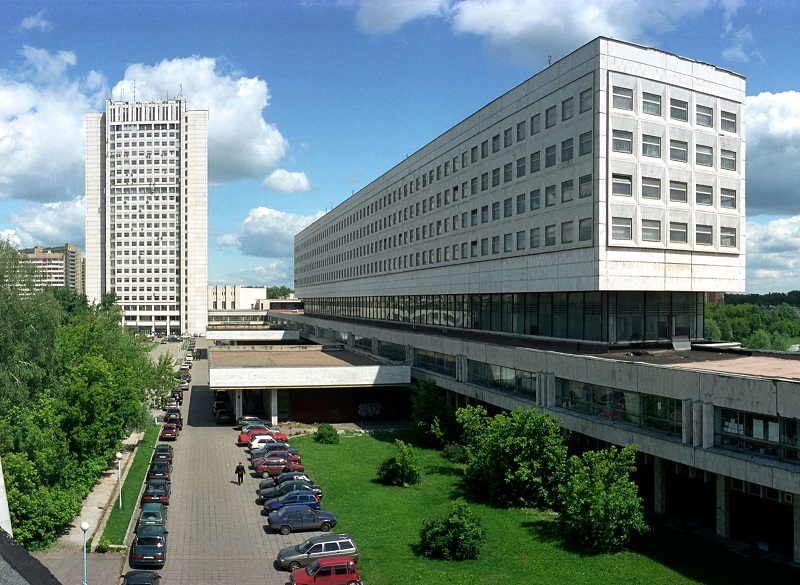BREEAM in Russia
In July 2017, BRE announced the launch of a new partnership with the National Research Moscow State University of Civil Engineering (MGSU) and the Russian Green Building Council (RuGBC).
The partnership is aimed at driving sustainable best practice through knowledge share and the development of BREEAM to enhance competitiveness of projects in Russia and improvement of the quality of residential and commercial real estate for end users.
The Russian market presents great opportunities and potential for the implementation of modern technologies. Increasing competition has the effect of encouraging construction market participants to explore new competitive advantages and opportunities for cost optimisation, in particularly around building operations.
BRE, MGSU and RuGBC are keen to ensure that the Russian construction market takes more advantage of global growth patterns, by creating an attractive environment for the introduction of modern standards which could drive the development and success of the Russian construction market.
“The Russian sustainable construction market is ready to move to its next stage of development,” commented Guy Eames, Chair of the RuGBC. “Developers, investors and state bodies have accepted sustainability as a competitive advantage and there is a desire to produce more efficient buildings. BRE, MGSU and RuGBC recognise this and are keen to ensure that the tools and support are available.”
At the heart of the bridge between the new regulations that MGSU are preparing and sharing international best practices is BREEAM. BREEAM is used in more than 70 countries and has an 80% market share of environmental building certification in Europe.
BREEAM is present on the Russian construction market. There are currently 52 licensed BREEAM experts operating in Russia and over 150 registered assessments, with a total floor area of over 5,000,000 m².
Russia offers great potential for BREEAM development, however with the majority of current assessors, developers, constructors and architects having English as a second language, a need to transit towards Russian language has been identified. As part of the agreement, BRE will therefore be providing Russia with a translated version of BREEAM International to support greater understanding of how the scheme operates and ensure greater integration of BREEAM with local regulations.
Further support will be provided by MGSU which will be offering support to further develop the BREEAM assessor network at a local level with RuGBC acting as a contact point for industry players.
“Cooperation of professionals from different countries is essential for establishing the principles of sustainable development, enhancing environmental compatibility of construction and improving liveability. This is particularly relevant for major metropolitan areas such as Moscow which faces large scale renovation initiatives”, commented Valery Ivanovich Telichenko, president of MGSU, Deputy of Moscow City Council.
This project will provide an opportunity to foster greater sharing and partnership between UK and Russia on how to drive sustainable construction, with much that both countries can learn from each other where research institutes play the key role in the process.
“A clear global picture is emerging of progressive and future-minded science based research institutes, which advise both the Government and private sectors, creating environmental and industry standards,” commented Martin Townsend, Sustainability Director, BRE Global. “We are confident in our partnership with the MGSU and RuGBC to deliver new skills to release the potential of the Russian market and enhance the quality of life and work of the Russian consumers.”
The joint initiative of MGSU, RuGBC and BRE is one more step for sustainable development in Russia, creating a more attractive environment for the local development of sustainable construction practices and enhancing the quality of life of the Russian population.
This article was originally published here by BRE Buzz on 7 July 2017. It was written by Simon Guy.
--BRE Buzz
[edit] Find out more
[edit] Related articles on Designing Buildings Wiki
Featured articles and news
Government consultations for the summer of 2025
A year of Labour, past and present consultations on the environment, the built environment, training and tax.
CMA competitiveness probe of major housing developers
100 million affordable housing contributions committed with further consultation published.
Homes England supports Greencore Homes
42 new build affordable sustainable homes in Oxfordshire.
Zero carbon social housing: unlocking brownfield potential
Seven ZEDpod strategies for brownfield housing success.
CIOB report; a blueprint for SDGs and the built environment
Pairing the Sustainable Development Goals with projects.
Types, tests, standards and fires relating to external cladding
Brief descriptions with an extensive list of fires for review.
Latest Build UK Building Safety Regime explainer published
Key elements in one short, now updated document.
UKGBC launch the UK Climate Resilience Roadmap
First guidance of its kind on direct climate impacts for the built environment and how it can adapt.
CLC Health, Safety and Wellbeing Strategy 2025
Launched by the Minister for Industry to look at fatalities on site, improving mental health and other issues.
One of the most impressive Victorian architects. Book review.
Common Assessment Standard now with building safety
New CAS update now includes mandatory building safety questions.
RTPI leader to become new CIOB Chief Executive Officer
Dr Victoria Hills MRTPI, FICE to take over after Caroline Gumble’s departure.
Social and affordable housing, a long term plan for delivery
The “Delivering a Decade of Renewal for Social and Affordable Housing” strategy sets out future path.
A change to adoptive architecture
Effects of global weather warming on architectural detailing, material choice and human interaction.
The proposed publicly owned and backed subsidiary of Homes England, to facilitate new homes.
How big is the problem and what can we do to mitigate the effects?
Overheating guidance and tools for building designers
A number of cool guides to help with the heat.
The UK's Modern Industrial Strategy: A 10 year plan
Previous consultation criticism, current key elements and general support with some persisting reservations.
Building Safety Regulator reforms
New roles, new staff and a new fast track service pave the way for a single construction regulator.


























